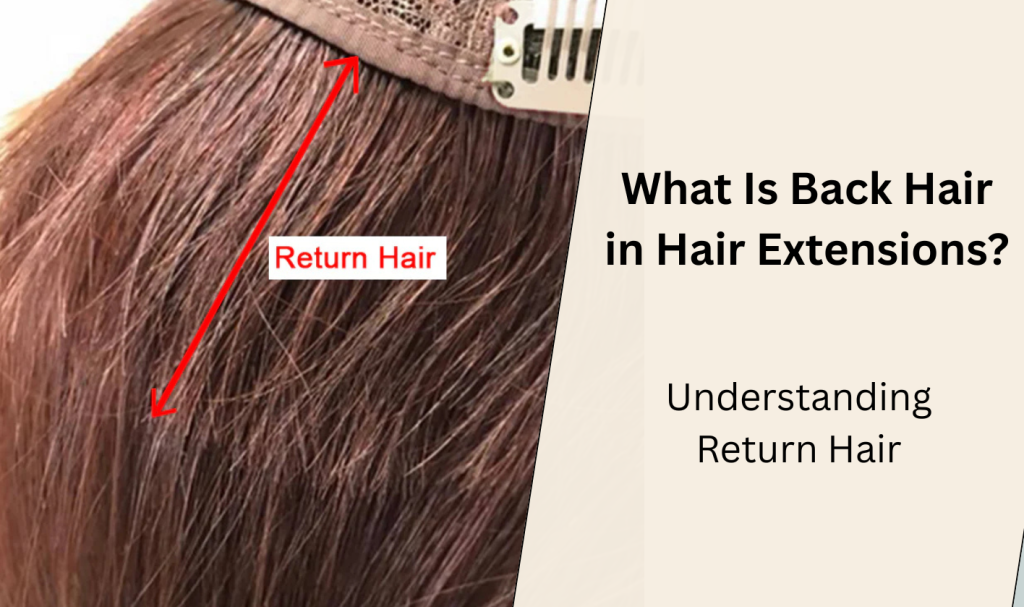Hair Knowledge
What Is Back Hair in Hair Extensions? Understanding Return Hair
If you’re working in the hair extension business—whether as a salon owner, wholesaler, or stylist—you’ve likely come across the term “back hair” or “return hair.” Though it may sound confusing at first, this technical term plays a big role in evaluating the quality and texture of hair extensions, especially hand-tied or machine wefts. In this article, we break down what back hair is, how it forms, how much is considered acceptable, and what it means for product quality.
I. What Is Back Hair (Return Hair)?
Back hair, also known as return hair, refers to the shorter strands of hair that return toward the weft base after being folded during the wefting process.
When hair is tied or sewn into a weft, the long strands are folded in half around the weft thread. This folding creates two parts:
- The long visible hair that flows down as the extension length
- The shorter section near the root, which is called return hair
These shorter fibers don’t hang down with the rest of the hair. Instead, they remain close to the base and point upward or backward—hence the name “back hair.”
II. Why Does Return Hair Exist?
Return hair is a natural byproduct of wefting. It’s nearly impossible to create a weft without folding the strands, especially in sew-in extensions. Even in tape-in or keratin tip extensions, some return hair may be present at the bonding point.
In high-quality extensions, return hair is usually:
- Well-aligned
- Trimmed evenly
- Blended back into the bundle to avoid tangling or bulkiness
III. How Much Return Hair Is Considered Normal?
A certain amount of return hair is completely normal and expected, even in premium extensions.
- Most standard return hair measures 3–5 inches
- In super double drawn hair, factories often reduce return hair as much as possible to ensure even thickness from root to tip
- However, zero return hair is nearly impossible unless the hair is cut at the root and processed individually (which raises cost significantly)
The amount of return hair depends on:
- The wefting method used
- The grade of hair (single drawn, double drawn, super double drawn)
- The desired finish (e.g., thick ends, full volume)
IV. Does Return Hair Affect Quality?
Return hair does not reduce the quality of extensions if it’s managed properly. However, too much return hair—or poorly processed ones—can lead to:
- Bulkiness near the weft
- Tangles at the root area
- Frizz or flyaways, especially for curly/wavy textures
High-end factories often use specialized machines or hand-trimming to reduce excess return hair and blend it smoothly, so it doesn’t affect the final look.
V. How to Manage Return Hair
If you’re a salon or distributor handling wefted hair, here are a few tips:
- Inspect the return hair at the root before installing. Light backcombing is normal—excessive short hairs may require reprocessing.
- Use a flat iron with low heat to smooth return hair after installation.
- Apply a light serum or leave-in conditioner to control flyaways and improve blending.
- For clients: Educate them that return hair is a technical necessity and not a defect.
VI. Summary
Return hair (or back hair) is a natural part of the hair extension production process and it is not a sign of poor quality hair. When properly processed, it has no visible impact on the look or performance of the hair. For professionals, understanding the role of return hair helps set the right expectations and evaluate suppliers more accurately.





